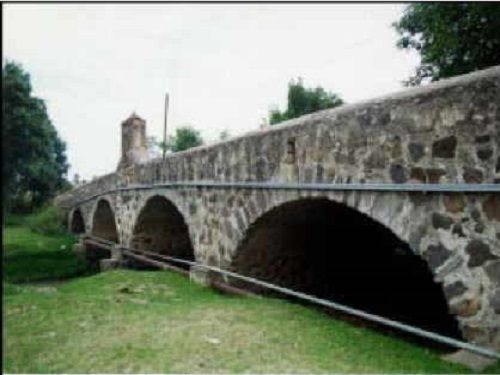
Excelente
429 Views
This bridge is located on the Muñoz-Xaltocan country road, in the municipal capital of San Martín Xaltocan. The walls are 0.50 cm wide and were built of stone. The construction is on one level and was built in 1889 by Governor Próspero Cahuantzi and by Municipal President Vicente Sosa. It also has four arches on the bottom and a small 60 cm wall on the top.
Xaltocan is a municipality in the state of Tlaxcala. The word Xaltocan comes from Nahuatl and has two meanings: "sandbank of spiders" or "where it is sown in sand". It has important architectural sites such as the San Martín Caballero Temple from the 17th century, the Temple of the Ascension, its construction dates back to the 19th century, the San Simón Temple, Sanctuary of Our Lady of Guadalupe, was built during the 19th and 20th centuries. The Muñoz-Xaltocan Stone Bridge is located on the Muñoz-Xaltocan country road. On November 10 and 11, a celebration is held in honor of the patron saint San Martín Caballero.
Carnival celebrations.- Carnival celebrations are held on Friday, Saturday and Sunday in the last days of February and the Xaltocan group invites the Cuautla and Topilco neighborhoods to participate. In the Municipality of Xaltocan, the groups of huehues dancing quadrillas are an essential part of the carnival celebrations. The musical accompaniment is provided by a brass band, the name of the musical sounds played always corresponds to the plot of the representation known as the "plaza departure", "the embassies", "long and short battles", "laments", among others. They meet at the house of the captain of the group on Friday, between 8 and 9 in the morning, to go to the neighborhoods to dance; they return to their town around 5 or 6 pm. The costume is in the style of Moors and Christians for religious celebrations. On November 10 and 11, a celebration is held in honor of the patron saint San Martín Caballero.